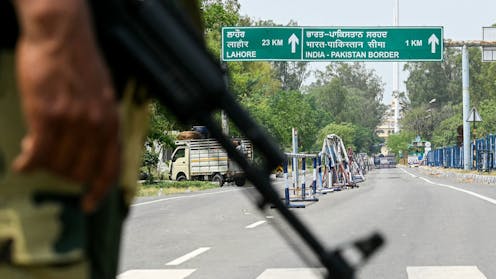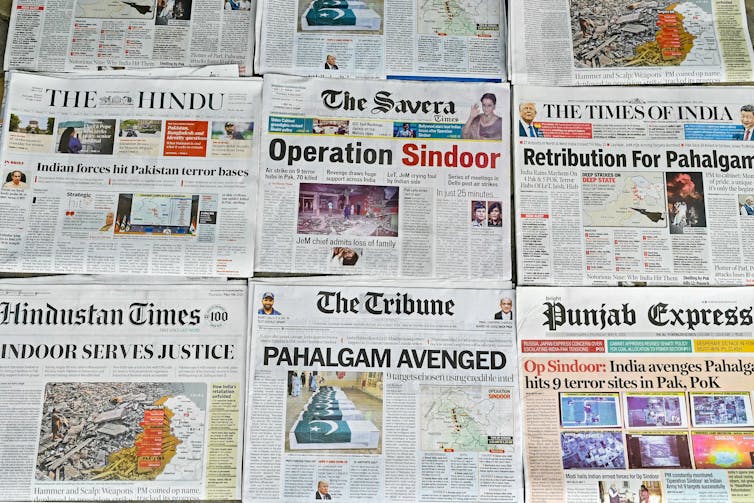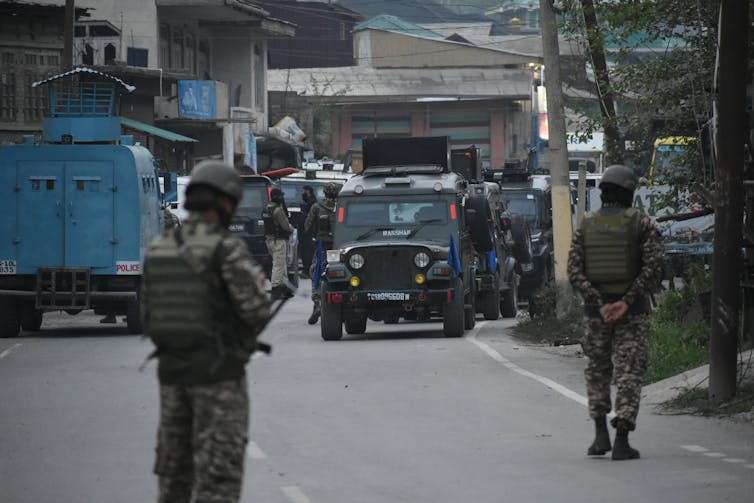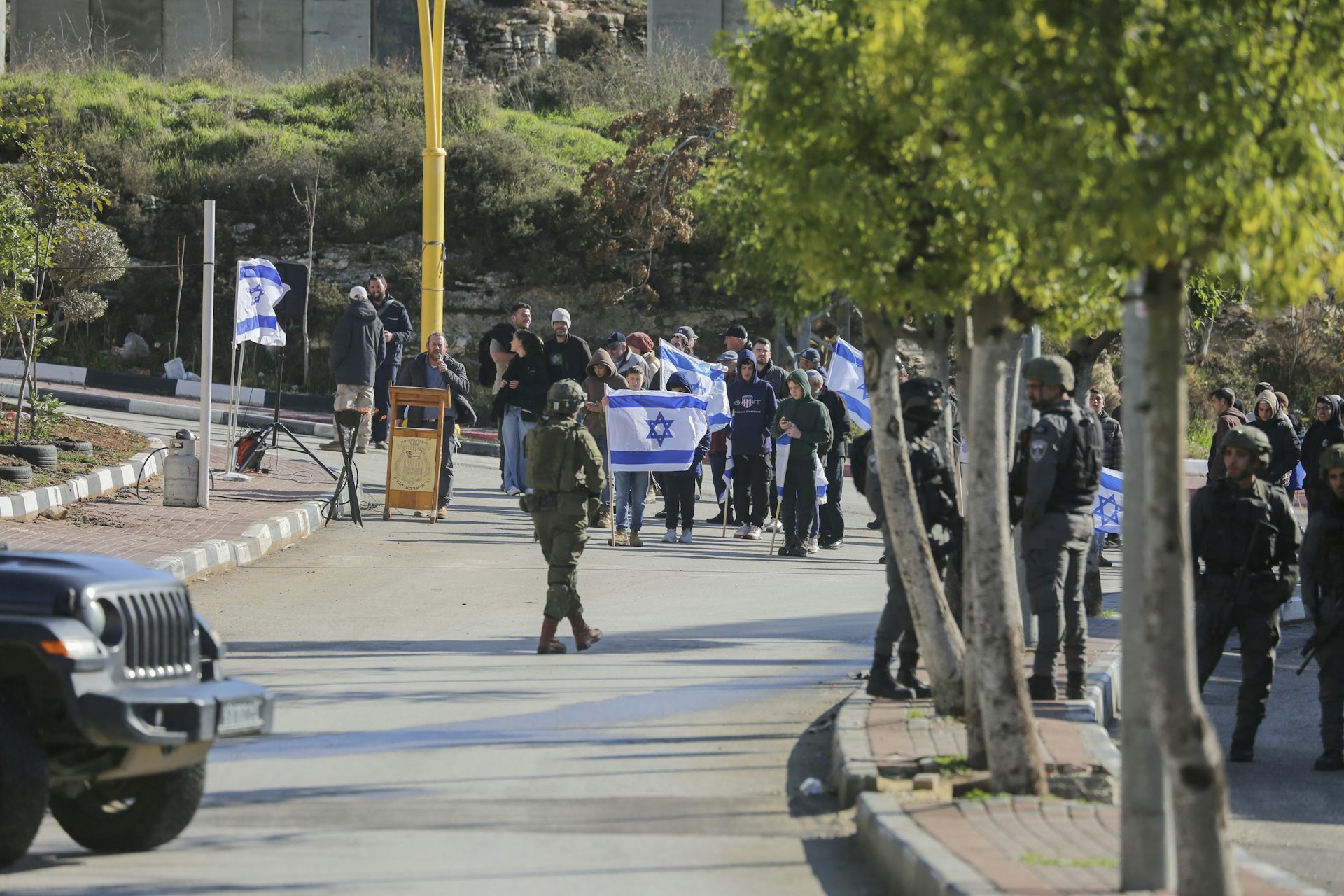India-Pakistan ceasefire shouldn’t disguise fact that norms have changed in South Asia, making futur
Tensions in South Asia have been taken down a notch with news of a ceasefire – but the conditions for future escalations remain, and mechanisms for peace appear to have been diminished.

India and Pakistan have seen the scenario play out before: a terror attack in which Indians are killed leads to a succession of escalatory tit-fot-tat measures that put South Asia on the brink of all-out war. And then there is a de-escalation.
The broad contours of that pattern have played out in the most recent crisis, with the latest step being the announcement of a ceasefire on May 10, 2025.
But in another important way, the flare-up – which began on April 22 with a deadly attack in Indian-controlled Kashmir, in which 26 people were killed – represents significant departures from the past. It involved direct missile exchanges targeting sites inside both territories and the use of advanced missile systems and drones by the two nuclear rivals for the first time.
As a scholar of nuclear rivalries, especially between India and Pakistan, I have long been concerned that the erosion of international sovereignty norms, diminished U.S. interest and influence in the region and the stockpiling of advanced military and digital technologies have significantly raised the risk of rapid and uncontrolled escalation in the event of a trigger in South Asia.
These changes have coincided with domestic political shifts in both countries. The pro-Hindu nationalism of Indian Prime Minister Narendra Modi’s government has heightened communal tensions in the country. Meanwhile Pakistan’s powerful army chief, Gen. Syed Asim Munir, has embraced the “two-nation theory,” which holds that Pakistan is a homeland for the subcontinent’s Muslims and India for Hindus.

This religious framing was even seen in the naming of the two countries’ military operations. For India, it is “Operation Sindoor” – a reference to the red vermilion used by married Hindu women, and a provocative nod to the widows of the Kashmir attack. Pakistan called its counter-operation “Bunyan-un-Marsoos” – an Arabic phrase from the Quran meaning “a solid structure.”
The role of Washington
The India-Pakistan rivalry has cost tens of thousands of lives across multiple wars in 1947-48, 1965 and 1971. But since the late 1990s, whenever India and Pakistan approached the brink of war, a familiar de-escalation playbook unfolded: intense diplomacy, often led by the United States, would help defuse tensions.
In 1999, President Bill Clinton’s direct mediation ended the Kargil conflict – a limited war triggered by Pakistani forces crossing the Line of Control into Indian-administered Kashmir – by pressing Pakistan for a withdrawal.
Similarly, after the 2001 attack inside the Indian Parliament by terrorists allegedly linked to Pakistan-based groups Lashkar-e-Taiba and Jaish-e-Mohammed, U.S. Deputy Secretary of State Richard Armitage engaged in intense shuttle diplomacy between Islamabad and New Delhi, averting war.
And after the 2008 Mumbai attacks, which saw 166 people killed by terrorists linked to Lashkar-e-Taiba, rapid and high-level American diplomatic involvement helped restrain India’s response and reduced the risk of an escalating conflict.
As recently as 2019, during the Balakot crisis – which followed a suicide bombing in Pulwama, Kashmir, that killed 40 Indian security personnel – it was American diplomatic pressure that helped contain hostilities. Former Secretary of State Mike Pompeo later wrote in his memoirs, “I do not think the world properly knows just how close the India-Pakistan rivalry came to spilling over into a nuclear conflagration in February 2019.”
A diplomatic void?
Washington as peacemaker made sense: It had influence and a vested interest.
During the Cold War, the U.S. formed a close alliance with Pakistan to counter India’s links with the Soviet Union. And after the 9/11 terror attacks, the U.S. poured tens of billions of dollars in military assistance into Pakistan as a frontline partner in the “war on terror.”
Simultaneously, beginning in the early 2000s, the U.S. began cultivating India as a strategic partner.
A stable Pakistan was a crucial partner in the U.S. war in Afghanistan; a friendly India was a strategic counterbalance to China. And this gave the U.S. both the motivation and credibility to act as an effective mediator during moments of India-Pakistan crisis.
Today, however, America’s diplomatic attention has shifted significantly away from South Asia. The process began with the end of the Cold War, but accelerated dramatically after the U.S. withdrawal from Afghanistan in 2021. More recently, the wars in Ukraine and the Middle East have consumed Washington’s diplomatic efforts.
Since President Donald Trump took office in January 2025, the U.S. has not appointed an ambassador in New Delhi or Islamabad, nor confirmed an assistant secretary of state for South and Central Asian Affairs – factors that must have hampered any mediating role for the United States.
And while Trump said the May 10 ceasefire followed a “long night of talks mediated by the United States,” statements from India and Pakistan appeared to downplay U.S. involvement, focusing instead on the direct bilateral nature of negotiations.
Should it transpire that Washington’s role as a mediator between Pakistan and India has been diminished, it is not immediately obvious who, if anyone, will fill the void. China, which has been trying to cultivate a role of mediator elsewhere, is not seen as a neutral mediator due to its close alliance with Pakistan and past border conflicts with India. Other regional powers like Iran and Saudi Arabia tried to step in during the latest crisis, but both lack the power clout of the U.S. or China.
This absence of external mediation is not, of course, a problem in itself. Historically, foreign interference – particularly U.S. support for Pakistan during the Cold War – often complicated dynamics in South Asia by creating military imbalances and reinforcing hardline positions. But the past has shown external pressure – especially from Washington – can be effective.
Breaking the norms
The recent escalation unfolded against the backdrop of another dynamic: the erosion of international norms since the end of the Cold War and accelerating after 2001.
America’s “war on terror” fundamentally challenged international legal frameworks through practices such as preemptive strikes against sovereign states, targeted drone killings and the “enhanced interrogation techniques” of detainees that many legal scholars classify as torture.
More recently, Israel’s operations in Gaza, Lebanon and Syria have drawn widespread criticism for violations of international humanitarian law – but have resulted in limited consequences.

In short, geopolitical norms have been ebbed away and military actions that were once deemed red lines are crossed with little accountability.
For India and Pakistan, this environment creates both opportunity and risk. Both can point to behaviors elsewhere to justify assertive actions that they have undertaken that, in previous years, would have been deemed a step too far – such as attacks on places of worship and sovereignty violations.
Multi-domain warfare
But what truly distinguished the latest crisis from those of the past is, I believe, its multi-domain nature. The conflict is no longer confined to conventional military exchanges along the line of control – as it was for the first five decades of the Kashmir question.
Both countries largely respected the line of control as a de facto boundary for military operations until the 2019 crisis. Since then, there has been a dangerous progression: first to cross-border airstrikes into each other’s territories, and now to a conflict that spans conventional military, cyber and information spheres simultaneously.
Reports indicate Chinese-made Pakistani J-10 fighter jets shot down multiple Indian aircraft, including advanced French Rafale jets. This confrontation between Chinese and Western weapons represents not just a bilateral conflict but a proxy test of rival global military technologies – adding another layer of great-power competition to the crisis.
In addition, the use of loitering drones designed to attack radar systems represents a significant escalation in the technological sophistication of cross-border attacks compared to years past.
The conflict has also expanded dramatically into the cyber domain. Pakistani hackers, claiming to be the “Pakistan Cyber Force,” report breaching several Indian defense institutions, potentially compromising personnel data and login credentials.
Simultaneously, social media and a new right-wing media in India have become a critical battlefront. Ultranationalist voices in India incited violence against Muslims and Kashmiris; in Pakistan, anti-India rhetoric similarly intensified online.
Cooler voices prevailing … for now
These shifts have created multiple escalation pathways that traditional crisis management approaches weren’t designed to address.
Particularly concerning is the nuclear dimension. Pakistan’s nuclear doctrine is that it will use nuclear weapons if its existence is threatened, and it has developed short-range tactical nuclear weapons intended to counter Indian conventional advantages. Meanwhile, India has informally dialed back its historic no-first-use stance, creating ambiguity about its operational doctrine.
Thankfully, as the ceasefire announcement indicates, mediating voices appear to have prevailed this time around. But eroding norms, diminished great power diplomacy and the advent of multi-domain warfare, I argue, made this latest flare-up a dangerous turning point.
What happens next will tell us much about how nuclear rivals manage, or fail to manage, the spiral of conflict in this dangerous new landscape.
Farah N. Jan does not work for, consult, own shares in or receive funding from any company or organization that would benefit from this article, and has disclosed no relevant affiliations beyond their academic appointment.
Read These Next
West Bank violence is soaring, fueled by a capitulation of Israeli institutions to settlers’ interes
Reluctance to address settler violence is the outcome of deep social, political and cultural changes,…
Black-market oil buyers will push Venezuela for bigger discounts following US seizure – starving Mad
Venezuela relies on the black-market oil trade for a large chunk of its revenue. US enforcement actions…
As a former federal judge, I’m concerned by a year of challenges to the US justice system
A university president who’s a former federal judge looks at the rule of law and the Trump administration’s…






